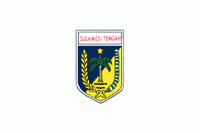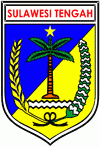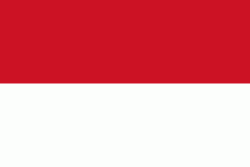Central Sulawesi (Indonesian: Sulawesi Tengah) is a province of Indonesia located at the centre of the island of Sulawesi. The administrative capital and largest city is located in Palu. The 2010 census recorded a population of 2,635,009 for the province, and the 2020 Census recorded 2,985,734, of whom 1,534,706 were male and 1,451,028 were female. The official estimate as at mid 2021 was 3,021,879. Central Sulawesi has an area of 61841.29 km2, the largest area among all provinces on Sulawesi Island, and has the second-largest population on Sulawesi Island after the province of South Sulawesi. It is bordered by the provinces of Gorontalo to the north, West Sulawesi, South Sulawesi and South East Sulawesi to the south, by Maluku to the east, and by the Makassar Strait to the west. The province is inhabited by many ethnic groups, such as the Kaili, Tolitoli, etc. The official language of the province is Indonesian, which is used for official purposes and inter-ethnic communication, while there are several indigenous language spoken by the Indigenous peoples of Central Sulawesi. Islam is the dominant religion in the province, followed by Christianity which is mostly adhered to by the people in the eastern part of the province.
In the 13th century, several kingdoms had been established in Central Sulawesi such as the Kingdom of Banawa, the Kingdom of Tawaeli, the Kingdom of Sigi, the Kingdom of Bangga, and the Kingdom of Banggai. The influence of Islam on the kingdoms in Central Sulawesi began to be felt in the 16th century. The spread of Islam in Central Sulawesi was a result of the expansion of kingdoms in South Sulawesi. The influence that first came was from the Kingdom of Bone and the Kingdom of Wajo. Dutch traders began arriving in the beginning of the 17th century. The Dutch built several fortifications in present-day Parigi to combat piracy in the region after annexing the region as part of the Dutch East Indies. The province remained part of the Indies for the next three centuries until the Dutch were ousted by the Japanese during World War II. After the Japanese surrendered, the area was incorporated into the new Republic of Indonesia. Initially, the area was part of North Sulawesi before being formed as a separate province on 13 April 1964.
According to UNICEF, Central Sulawesi is a province with a significant number of young people. As many as 1 million people or 35 percent of the total population in this province are children. More than three out of four children live in rural areas. More than 185,000 children (18.2 percent) live below the provincial poverty line in 2015 (Rp. 11,127 per person per day). However, more households are in a vulnerable position and live with income that is slightly above the poverty line. In addition, three-quarters of children experience deprivation in two dimensions non-income poverty or more, with that inequality striking between urban and rural areas.



















